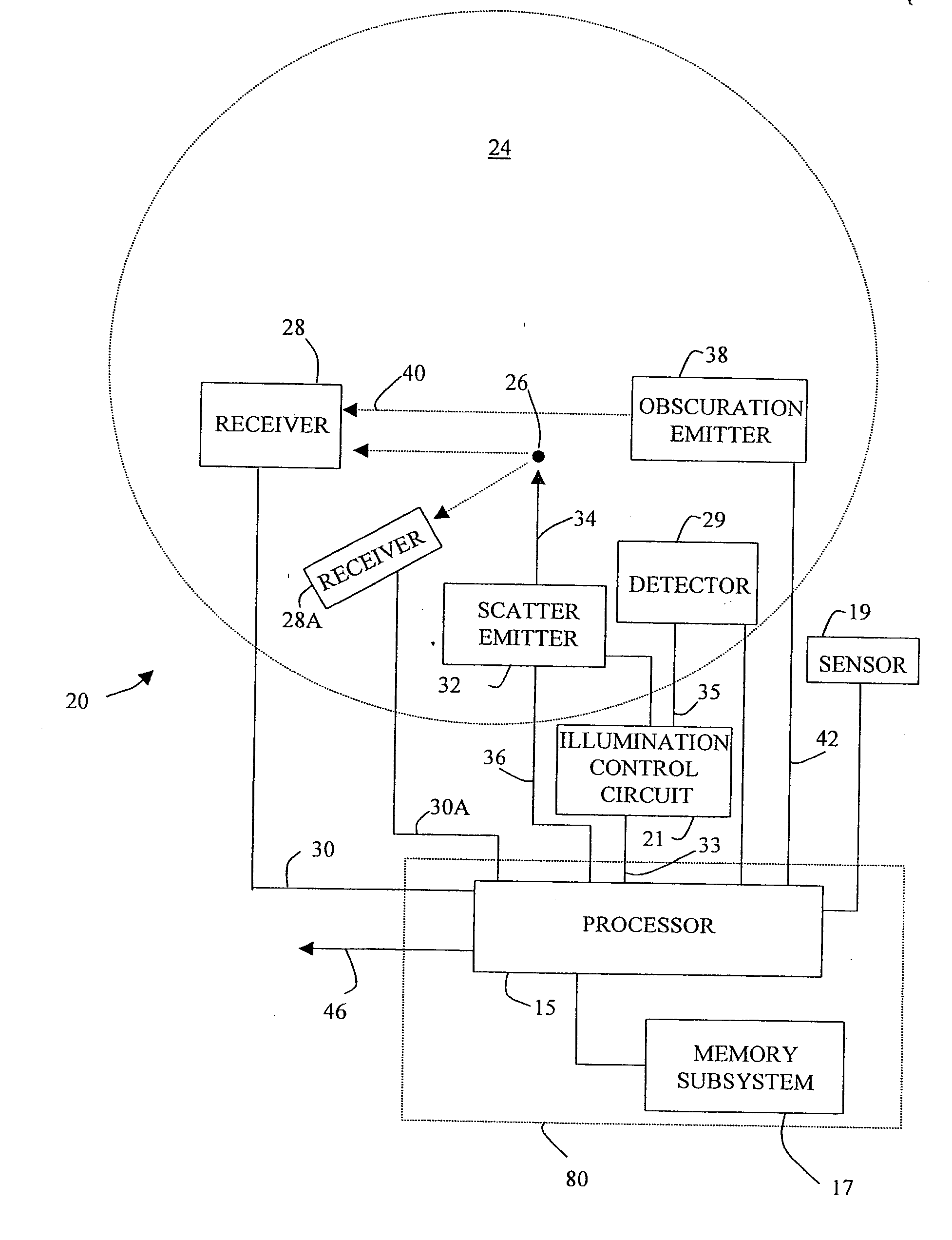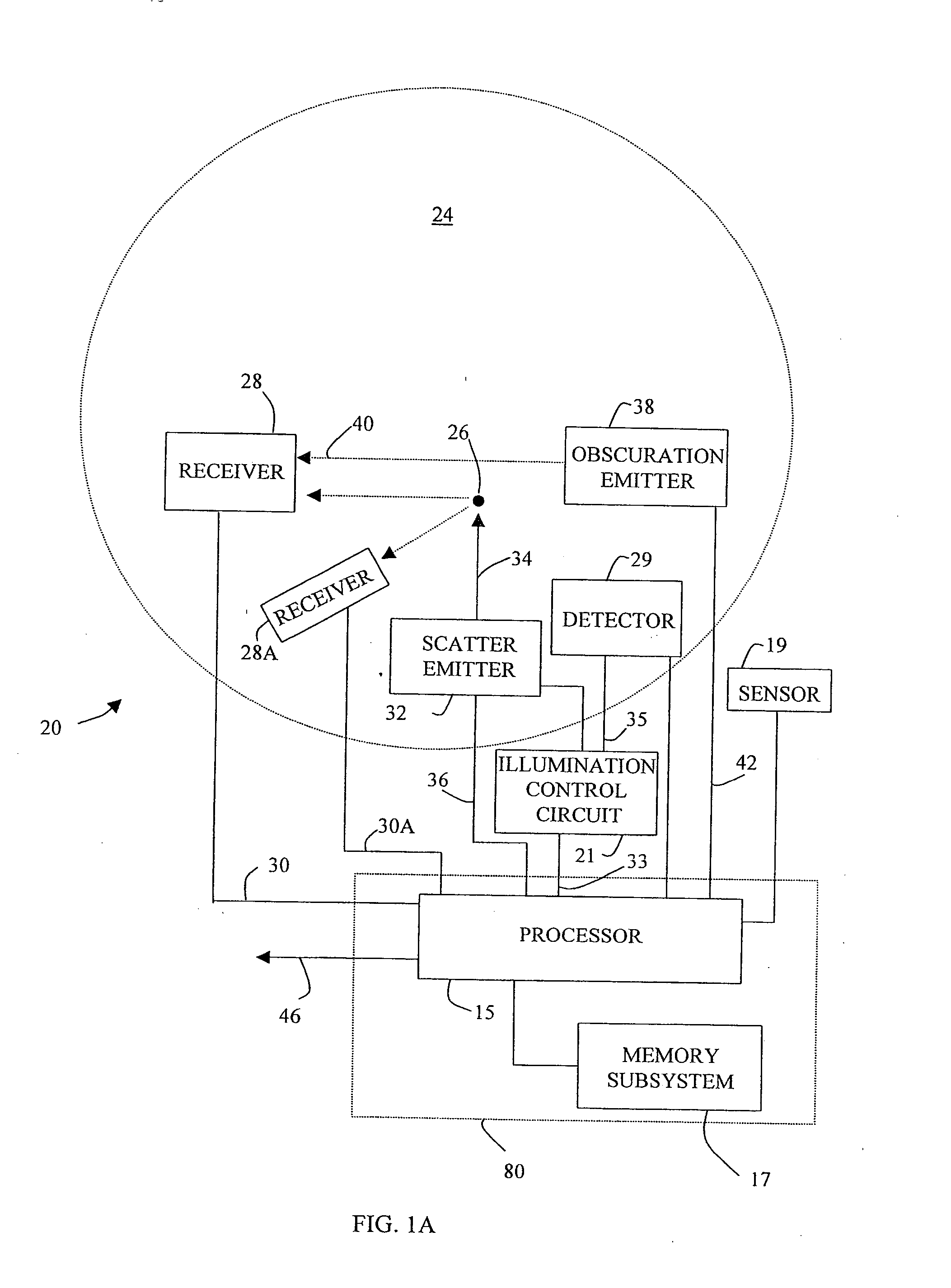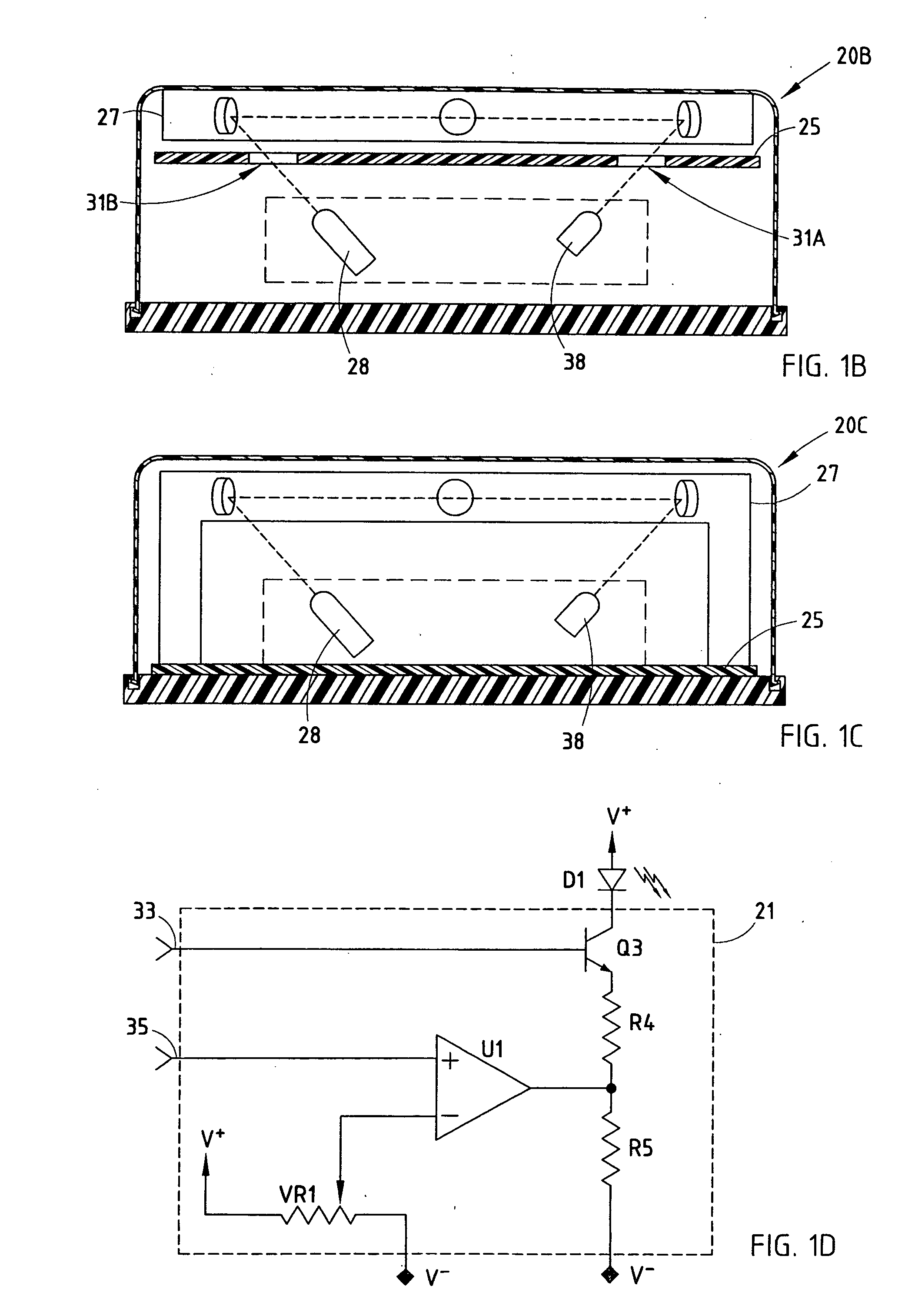Compact particle sensor
a sensor and compact technology, applied in the field of sensors, can solve the problems of not being able to adapt to changing environmental conditions and responding appropriately to different particle reflectivities
- Summary
- Abstract
- Description
- Claims
- Application Information
AI Technical Summary
Benefits of technology
Problems solved by technology
Method used
Image
Examples
Embodiment Construction
General Considerations
A weakness of many contemporary smoke detectors is their reliance on a single measured characteristic of smoke particles to indicate the presence, or lack, of smoke in a test chamber of the smoke detector. This is generally true for both ionic and optical methods of detecting smoke. In the case of the optical scatter technique of detection, the characteristic of concern is the ability of the smoke to reflect light. Although the wavelengths of light emanating from a light source may be controlled to enhance the desired response, the reflected light provides a single indicator. In the case of the optical obscuration technique, the measured characteristic of the smoke is its ability to attenuate light emanating from a light source. Again, the wavelength of light may be chosen to enhance this effect.
The ability of smoke to either reflect or attenuate light is generally determined by more than just the density of the particles suspended in the measurement mediu...
PUM
 Login to View More
Login to View More Abstract
Description
Claims
Application Information
 Login to View More
Login to View More - R&D
- Intellectual Property
- Life Sciences
- Materials
- Tech Scout
- Unparalleled Data Quality
- Higher Quality Content
- 60% Fewer Hallucinations
Browse by: Latest US Patents, China's latest patents, Technical Efficacy Thesaurus, Application Domain, Technology Topic, Popular Technical Reports.
© 2025 PatSnap. All rights reserved.Legal|Privacy policy|Modern Slavery Act Transparency Statement|Sitemap|About US| Contact US: help@patsnap.com



